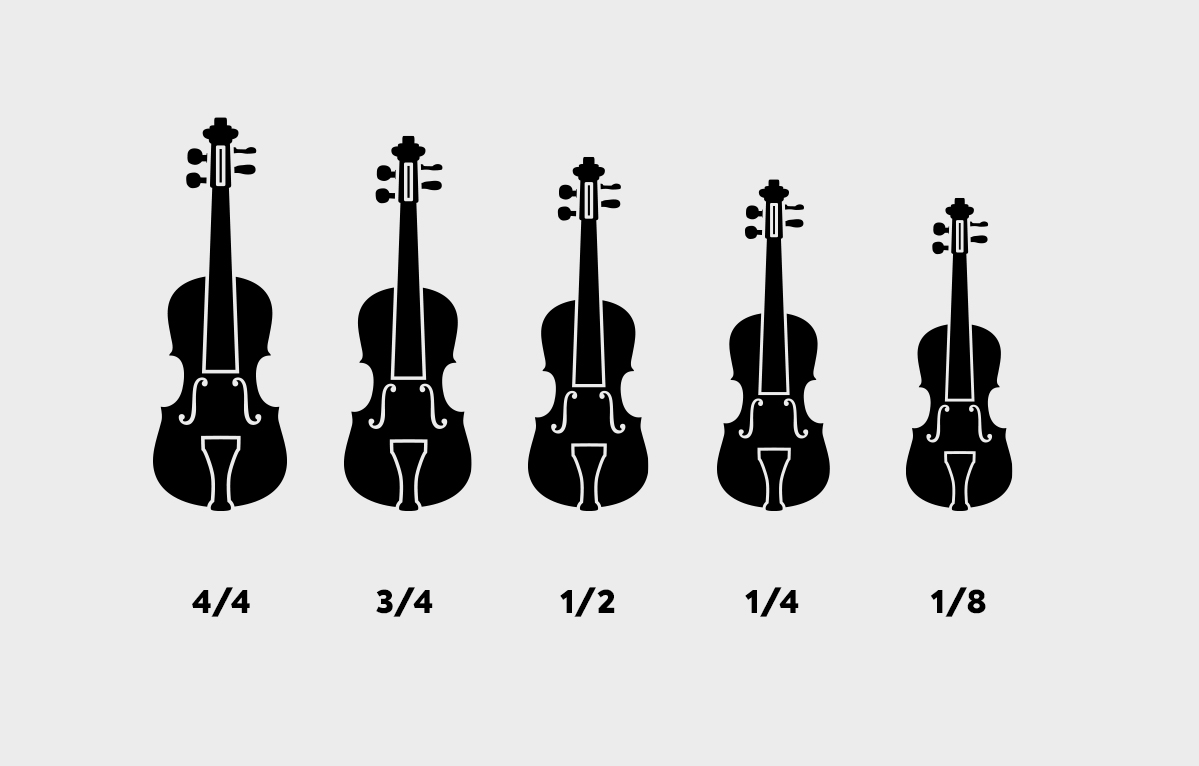How to choose a violin

You might well have heard the well-known saying that learning to play the violin is hard. We won't deny it: it is a challenge, but you get all the more enjoyment out of playing it. We at Kytary.cz are ready to motivate you to get playing and advise you on anything violin-related. Just come and see us at our store or contact us via our customer line 169 941 99 (Mon-Fri 9:00 a.m. - 4:00 p.m.) or you can e-mail us communication@kytary.ie.
Violin types
There are two types of violin, acoustic and electric. The type you choose depends on whether you prefer a classic sound or fancy experimenting. In both sections we have a wide range of affordable violins as well as master instruments in a higher price category.

The classic wooden violins are the most common and have kept the same shape for centuries. The main differences between the individual models are in the size and also in the choice of material, which determines how the instrument looks and the quality of the individual components. Last but not least, the resulting sound depends on the quality and age of the wood. We recommend that beginner musicians opt for an acoustic violin. It’s easier to learn all the necessary fingering and techniques on one of these.

Electric violins tend to be popular with more experienced players who have already mastered certain playing skills and habits. This is not a rule, however, and anyone can enjoy playing an electric model. To play these violins, they need to be hooked up to an amplifier. That gives you a louder sound as well as a wide range of effects. Not to mention the fact that you can connect headphones to the amp and practise more quietly. Unlike the classic type of violin, the electric versions come in a whole host of designs, so they often look really extravagant.
Violin size
When choosing a violin, it is very important to take account of its size. A well-sized violin will not only help you play well, but also make it a painless experience, as you won't be putting unnecessary strain on your neck and spine. The standard size for adults is 4/4 ; if you're looking for a children's violin, you're better to go for the ¼, ½ or ¾ sizes.
If you're not sure which size to choose, you can easily find out: place the violin on your shoulder as if you were going to play it. Stretch out your arm. If you can put your hand around the entire peg box (the head part with the tuning pegs), that’s the right size instrument for you.

What will you need to play it
A bow - you can't do without this wooden stick strung with horsehair. Unless of course you want to play with some other magic wand 😊. Bows are made from either traditional materials such as Brazilian wood or the more exclusive pernambuco. Some bows are now starting to be made from carbon.
Rosin is a distilled resin that is applied to the bow horsehair to increase friction, which helps to achieve a better tone.
The case protects the instrument against damage and helps to keep it working as it should. So, if you know you won't be playing for a while, place the instrument in its case. You can choose from dozens of case types if you find the basic one too mundane 😊.
And what else could come in useful?
Some things that are not usually included and need to be bought separately are the ‘spider’ (a height-adjustable shoulder rest), a tuner (any type can be used), a violin stand and a music stand. With an electric violin, don't forget the amplifier (a guitar combo will do) with an instrument cable.
The strings have a fundamental impact on the sound and it's well worth trying different brands and thicknesses. You can choose from traditional brands such as Pirastro, Thomastik or D'Addario; for beginners, we can recommend Alice.
Happy playing!

